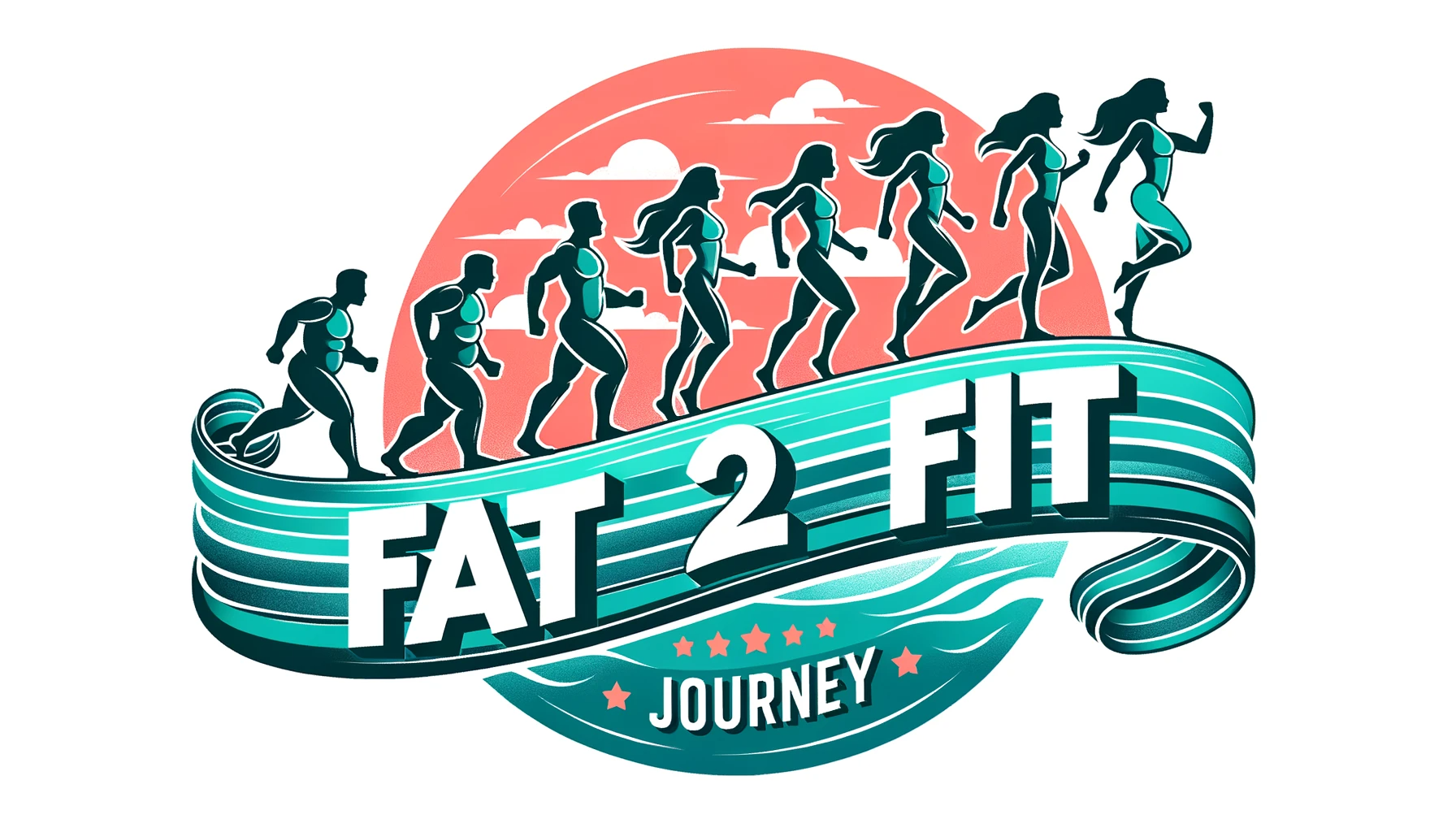Have you ever wondered about a diet that allows you to eat normally for five days and then restricts your calories for the remaining two days? Well, look no further because the 5:2 diet might just be the answer you’ve been searching for. This unique eating plan has gained popularity for its flexibility and effectiveness in helping people lose weight and improve overall health. With just a slight adjustment to your weekly routine, you can unlock the potential to achieve your weight loss goals while still enjoying the foods you love. Let’s take a closer look at what the 5:2 diet entails and how it can revolutionize the way you approach your diet and lifestyle.

Table of Contents
What is the 5:2 Diet?
The 5:2 Diet, also known as the Fast Diet, is a popular intermittent fasting method that involves alternating between regular eating days and fasting days. It is a flexible and sustainable approach to weight loss and improved health, allowing individuals to consume fewer calories on fasting days while eating normally on non-fasting days. This diet has gained popularity due to its simplicity and potential for long-term success.
Explanation of the 5:2 Diet
The 5:2 Diet is based on the concept of intermittent fasting, which involves periods of fasting and periods of regular eating. On the 5:2 Diet, you eat normally for five days of the week and restrict your calorie intake to 500-600 calories on the remaining two days. These fasting days can be consecutive or split throughout the week, depending on your preference and schedule. The goal is to create a calorie deficit on fasting days without completely eliminating food, promoting weight loss while still maintaining a balanced diet.
How it Works
The 5:2 Diet works by putting your body into a mild period of calorie restriction, which triggers a range of beneficial physiological changes. On fasting days, your body begins to tap into its fat stores for energy, leading to weight loss. Additionally, fasting has been shown to improve insulin sensitivity, reduce inflammation, and support cellular repair processes. By following this pattern of intermittent fasting, you can achieve sustainable weight loss and potentially experience various health benefits.
Benefits of the 5:2 Diet
The 5:2 Diet offers several benefits beyond weight loss. Research suggests that intermittent fasting can improve insulin sensitivity, helping to regulate blood sugar levels and reduce the risk of developing type 2 diabetes. Fasting also promotes autophagy, a process that removes damaged cells and promotes cellular regeneration, which may have anti-aging effects. Additionally, intermittent fasting has been associated with reduced inflammation, improved brain health, and a lowered risk of chronic diseases such as heart disease and cancer.
Who Should Try the 5:2 Diet
The 5:2 Diet is suitable for most healthy individuals who are looking to lose weight or improve their overall health. However, it is always important to consult with your doctor before starting any new diet or exercise plan, especially if you have any underlying medical conditions or are taking medication that may be affected by changes in your diet. Pregnant or breastfeeding women should avoid fasting and focus on maintaining a balanced and nutritious diet to support their needs and the needs of their growing baby.
Preparing for the 5:2 Diet
Before embarking on the 5:2 Diet, it is essential to adequately prepare yourself to set yourself up for success. Taking the following steps can help you make the most out of your journey:
Consult Your Doctor
It is recommended to consult your doctor or a registered dietitian before starting the 5:2 Diet. They can assess your overall health, provide personalized recommendations, and ensure that fasting is safe and appropriate for you based on any underlying medical conditions or medications you may be taking. They can also help you determine realistic weight loss goals and provide guidance throughout your journey.
Choose the Right Days
When selecting your fasting days, consider your lifestyle, work commitments, and social engagements. It is essential to choose days when you’ll be able to manage the calorie restriction comfortably. Some individuals prefer to have fasting days spaced apart, such as Tuesday and Thursday, while others prefer consecutive days, such as Monday and Tuesday. Experiment and find a schedule that works best for you.
Plan Your Meals
Meal planning is crucial on both fasting and non-fasting days. On fasting days, it is important to have a clear idea of what low-calorie meals you will consume to ensure that you meet your calorie goals while still obtaining necessary nutrients. On non-fasting days, plan balanced and nutritious meals that support overall health and weight management. Consider incorporating a variety of fruits, vegetables, lean proteins, and healthy fats to meet your nutritional needs.
Stock Up on Healthy Foods
Having a well-stocked pantry and refrigerator is key to maintaining a healthy eating pattern throughout the 5:2 Diet. Prioritize purchasing fresh fruits and vegetables, lean proteins, whole grains, and healthy fats. Limit your exposure to processed foods, sugary snacks, and high-calorie beverages. By having nutritious options readily available, you can make healthier choices and avoid temptation during both fasting and non-fasting days.
What to Eat on the 5:2 Diet
The 5:2 Diet emphasizes consuming whole, unprocessed foods that provide essential nutrients while keeping calorie intake in check. Here are some guidelines for meal planning on the 5:2 Diet:
Focus on Fruits and Vegetables
Fruits and vegetables should form the foundation of your meals on the 5:2 Diet. They are low in calories but rich in vitamins, minerals, and fiber, which can help you feel full and satisfied. Aim to include a variety of colorful fruits and vegetables in your meals to obtain a broad range of antioxidants and other beneficial compounds.
Include Lean Protein Sources
Protein is essential for maintaining muscle mass and supporting various bodily functions. Include lean protein sources such as skinless poultry, fish, eggs, legumes, and tofu in your meals both on fasting and non-fasting days. Protein-rich foods can help keep you feeling full and satisfied for longer, which is especially important on fasting days when calorie intake is restricted.
Healthy Fats to Consume
Healthy fats are an important component of a balanced diet and can help you feel satiated. Opt for sources of unsaturated fats, such as avocados, nuts, seeds, and olive oil. These fats provide essential fatty acids and can help regulate cholesterol levels. However, it is important to consume them in moderation, as they are high in calories.
Avoid Processed Foods and Sugar
Processed foods are typically high in added sugars, unhealthy fats, and empty calories. They offer little nutritional value and can lead to weight gain and increased risk of chronic diseases. Avoid processed snacks, sugary beverages, and packaged convenience foods. Instead, focus on whole, unprocessed foods that nourish your body and support your overall health.
Fasting Days on the 5:2 Diet
Fasting days on the 5:2 Diet involve consuming a limited number of calories, typically around 500-600 calories for women and 600-700 calories for men. Here are some tips to help you navigate fasting days successfully:
Calorie Guidelines
It is crucial to adhere to the recommended calorie guidelines on fasting days to ensure that you are still obtaining necessary nutrients while creating a calorie deficit. Aim to consume nutrient-dense foods that provide satiety while keeping your total calorie intake in check. Avoid relying on heavily processed, low-nutrient foods to meet your calorie goals.
Tips for Managing Hunger
Feeling hungry is normal on fasting days, but there are strategies to help manage hunger and cravings. Drinking plenty of water or herbal tea can help curb hunger pangs, keep you hydrated, and promote a feeling of fullness. Chewing sugar-free gum or snacking on crunchy vegetables like cucumber or celery can also help alleviate hunger. Distracting yourself with activities or hobbies can take your mind off food and help you push through the fasting period.
Choosing Low-Calorie Meals
On fasting days, focus on consuming low-calorie, nutrient-dense meals. Opt for lean protein sources, such as grilled chicken or fish, and load up on fiber-rich vegetables and leafy greens. Incorporate whole grains, such as quinoa or brown rice, for sustained energy. Experiment with flavorful herbs and spices to enhance the taste of your meals without adding excess calories.
Hydration and Fasting
Staying hydrated is crucial, especially on fasting days. Drinking an adequate amount of water not only helps manage hunger but also supports overall health and digestion. Aim to drink at least 8 cups of water per day, and consider incorporating electrolyte-rich beverages like coconut water to maintain hydration levels. However, avoid sugary beverages and excessive caffeine, as they can disrupt fasting and lead to energy crashes.

Non-Fasting Days on the 5:2 Diet
On non-fasting days, you have the freedom to consume a regular number of calories without strict restrictions. However, it is still important to make mindful choices to support your weight loss and overall health goals. Here are some guidelines for non-fasting days on the 5:2 Diet:
Eating a Balanced Diet
Non-fasting days should focus on maintaining a balanced and nutritious diet. Fill your plate with lean proteins, whole grains, fruits, vegetables, and healthy fats. Prioritize whole, unprocessed foods while limiting your intake of refined carbohydrates, added sugars, and unhealthy fats. Remember that moderation is key, and it is essential to listen to your body’s hunger and fullness cues.
Importance of Portion Control
Portion control plays a significant role in managing caloric intake and promoting weight loss. Even on non-fasting days, be mindful of your portion sizes and avoid overeating. Incorporate a variety of foods in your meals and practice mindful eating by savoring each bite and paying attention to your body’s signals of fullness.
Incorporating Exercise
Regular physical activity is essential for overall health and weight management. Incorporate exercise into your non-fasting days to maximize the benefits of the 5:2 Diet. Aim for at least 150 minutes of moderate-intensity aerobic exercise per week, along with strength-training exercises. Find activities that you enjoy, such as walking, swimming, or cycling, to make exercise a sustainable part of your lifestyle.
Snack and Meal Ideas
On non-fasting days, you have the freedom to enjoy a wider range of foods and meals. Here are some snack and meal ideas to inspire your 5:2 Diet journey:
- Snacks: Greek yogurt with berries, a handful of unsalted nuts, carrot sticks with hummus, or rice cakes with avocado and tomato.
- Breakfast: Vegetable omelet with whole-grain toast, overnight oats topped with fruit and nuts, or a smoothie made with almond milk, spinach, banana, and nut butter.
- Lunch: Grilled chicken or tofu salad with mixed greens and a variety of vegetables, lentil soup with whole-grain bread, or a quinoa and vegetable stir-fry.
- Dinner: Baked salmon with roasted vegetables, turkey chili with beans, or a whole-grain pasta dish with tomato sauce and grilled vegetables.
- Dessert: Fresh fruit salad, a small piece of dark chocolate, or a homemade yogurt parfait with granola and berries.
Experiment with different flavors and recipes to keep your meals exciting and enjoyable, even while following the 5:2 Diet.
Weight Loss Expectations
When embarking on the 5:2 Diet, it is important to set realistic weight loss goals and have a clear understanding of what to expect. Here are some key points to consider:
Realistic Goals
Setting realistic and achievable weight loss goals is crucial for long-term success. Aim for gradual weight loss of 1-2 pounds per week, as this is a healthy and sustainable rate. Keep in mind that weight loss may vary from person to person, and factors such as starting weight, body composition, and adherence to the diet can impact results.
Expected Rate of Weight Loss
On the 5:2 Diet, weight loss is primarily achieved through calorie restriction on fasting days and overall reduced caloric intake. If you consistently adhere to the diet, you can expect to lose weight over time. However, it is normal to experience fluctuations in weight due to factors such as water retention, hormonal changes, and muscle gain. Focus on the overall trend rather than the day-to-day fluctuations.
Long-Term Sustainability
The 5:2 Diet is designed to be a long-term lifestyle change rather than a short-term fix. It is important to adopt sustainable habits and make permanent dietary changes to maintain your weight loss and overall health. Embrace the flexibility of the diet and find a balance that works for you. Consider incorporating the principles of the 5:2 Diet into your everyday life even after reaching your weight loss goals.
Monitor Progress
Tracking your progress can provide motivation and help you stay on track. Keep a journal or use a smartphone app to record your meals, fasting days, exercise, and weight. This can help you identify patterns, track your calorie intake, and make adjustments as needed. Celebrate small victories along the way and focus on the positive changes you are making to your health and well-being.

Potential Health Benefits
Apart from weight loss, the 5:2 Diet offers various potential health benefits. Here are some key advantages of intermittent fasting:
Improved Insulin Sensitivity
Intermittent fasting has been shown to improve insulin sensitivity, which is crucial for maintaining steady blood sugar levels. Improved insulin sensitivity can help prevent insulin resistance, a condition associated with an increased risk of developing type 2 diabetes. By allowing the body to have regular periods of fasting, the 5:2 Diet may improve insulin sensitivity and promote better glucose control.
Reduced Inflammation
Chronic inflammation has been linked to the development of many diseases, including heart disease, diabetes, and certain cancers. Intermittent fasting has been shown to reduce inflammation markers in the body. By incorporating the 5:2 Diet into your lifestyle, you may experience a reduction in chronic inflammation, leading to improved overall health and a lower risk of developing these diseases.
Enhanced Brain Health
Intermittent fasting has shown promise in promoting brain health and protecting against age-related cognitive decline. Studies have indicated that fasting can increase the production of brain-derived neurotrophic factor (BDNF), a protein that supports the growth and maintenance of brain cells. By following the 5:2 Diet, you may potentially enhance brain health and improve cognitive function.
Lowered Risk of Chronic Diseases
The 5:2 Diet may help reduce the risk of chronic diseases, including heart disease, cancer, and neurodegenerative disorders. Intermittent fasting has been shown to improve cardiovascular health by reducing blood pressure, cholesterol levels, and triglycerides. It has also demonstrated potential anti-cancer effects by enhancing cellular repair processes and reducing oxidative stress. While more research is needed, incorporating the 5:2 Diet into your lifestyle may have long-term benefits for disease prevention.
Practical Tips and Strategies
To make the most out of your 5:2 Diet journey, consider the following practical tips and strategies for success:
Meal Prepping for Success
Meal prepping can save time, reduce stress, and help you stay on track with your dietary goals. Set aside some time each week to plan and prepare your meals in advance. Chop vegetables, cook lean proteins, and portion out meals into individual containers. This way, you’ll have healthy options readily available, and you’ll be less likely to reach for unhealthy choices on busy days or when hunger strikes.
Creating a Support System
Having a support system can significantly impact your success on the 5:2 Diet. Share your goals and progress with friends, family, or join an online community or support group. Surround yourself with like-minded individuals who can offer encouragement, share experiences, and provide accountability. Having someone to lean on during challenging moments can help you stay motivated and reinforce your dedication to the diet.
Managing Cravings
Cravings are a normal part of any dietary change. When cravings strike, opt for healthier alternatives and smart food choices. For example, if you’re craving something sweet, reach for a piece of fruit instead of a sugary snack. Experiment with different herbs and spices to add flavor to your meals without adding excessive calories. Practice mindfulness and be aware of why you are craving certain foods. Recognize whether it is true hunger or an emotional trigger, and find alternative ways to address those emotions.
Dealing with Social Situations
Social events and gatherings can pose challenges on the 5:2 Diet, but they don’t have to derail your progress. Plan ahead and make specific choices that align with your dietary goals. Bring a dish to share that fits within the guidelines of the diet, or offer to host the gathering and prepare meals that are 5:2 Diet-friendly. Communicate with friends and family about your dietary preferences and seek their support. Remember, the 5:2 Diet is flexible, and occasional indulgences can be enjoyed as long as they are balanced with healthy choices.
Adjusting the 5:2 Diet
The 5:2 Diet can be adjusted based on individual needs and preferences. Here are some considerations to keep in mind when modifying the diet:
Modifying Calorie Intake
The calorie intake on fasting days can be adjusted based on individual needs and preferences. If the recommended 500-600 calories feel too restrictive, you can increase the allowance slightly. However, it is important to strike a balance between meeting your nutritional needs and still creating a calorie deficit for weight loss. Experiment with different calorie ranges to find what works best for your body.
Altering Fasting Patterns
The fasting days on the 5:2 Diet can be modified to fit your lifestyle and preferences. Instead of consecutive fasting days, you can spread them out throughout the week. For example, you can choose to fast on Mondays and Thursdays instead of fasting on consecutive days. Customize the fasting pattern to accommodate your schedule and personal preference, as long as you maintain the overall ratio of fasting to non-fasting days.
Incorporating Other Intermittent Fasting Methods
While the 5:2 Diet is an effective approach, it may not be suitable for everyone. If you find it challenging to adhere to the 5:2 ratio, you can explore other intermittent fasting methods, such as the 16:8 method or alternate-day fasting. These methods involve fasting for a specific number of hours per day or fasting every other day. Find the intermittent fasting approach that aligns best with your lifestyle and goals.
Seeking Professional Guidance
If you have specific health concerns, existing medical conditions, or are unsure of how to modify the 5:2 Diet to suit your needs, it is always advisable to seek professional guidance. Consult a registered dietitian or a healthcare provider who can provide personalized advice and support. They can help you navigate any challenges, ensure that your dietary modifications are safe and effective, and monitor any potential impacts on your health.
Safety Considerations
While the 5:2 Diet is generally safe for most healthy individuals, there are some important safety considerations to keep in mind:
Pregnancy and Breastfeeding
If you are pregnant, planning to become pregnant, or breastfeeding, it is not recommended to follow the 5:2 Diet. Proper nutrition is crucial during these periods to support the growth and development of the baby. Focus on consuming a balanced and varied diet that meets your nutritional needs during this time. Speak to your healthcare provider or a registered dietitian for guidance on maintaining a healthy diet while pregnant or breastfeeding.
Existing Medical Conditions
If you have any underlying medical conditions, such as diabetes, cardiovascular disease, or a history of eating disorders, it is crucial to consult with your healthcare provider or a registered dietitian before starting the 5:2 Diet. Certain medical conditions may require additional monitoring, adjustments in medication, or specific dietary modifications. They can provide personalized guidance and ensure that fasting is safe and appropriate for your specific condition.
Medication Interactions
Some medications may need to be taken with food, making fasting potentially problematic. If you are taking medication, it is important to consult with your healthcare provider or pharmacist to ensure that fasting will not interfere with the effectiveness or absorption of your medication. They can provide guidance on the best way to time your meals and medications to avoid any potential interactions or adverse effects.
Maintaining a Balanced Lifestyle
While the 5:2 Diet can be a valuable tool for weight loss and improved health, it is essential to maintain a balanced lifestyle beyond the diet itself. Focus on regular exercise, stress management, quality sleep, and prioritizing self-care. Incorporate a variety of nutrient-dense foods into your diet, regardless of fasting or non-fasting days. The 5:2 Diet should be seen as a long-term lifestyle change rather than a short-term solution.
In conclusion, the 5:2 Diet offers a flexible and sustainable approach to weight loss and improved health. By alternating between regular eating days and fasting days, individuals can achieve a calorie deficit while still enjoying a balanced diet. The potential benefits of the 5:2 Diet extend beyond weight loss, including improved insulin sensitivity, reduced inflammation, enhanced brain health, and a lowered risk of chronic diseases. By following practical tips and strategies, adjusting the diet as needed, and considering safety considerations, you can successfully implement the 5:2 Diet into your lifestyle and reap its many benefits. Remember to consult with a healthcare professional before starting any new diet or exercise plan to ensure it is suitable for your individual needs.
